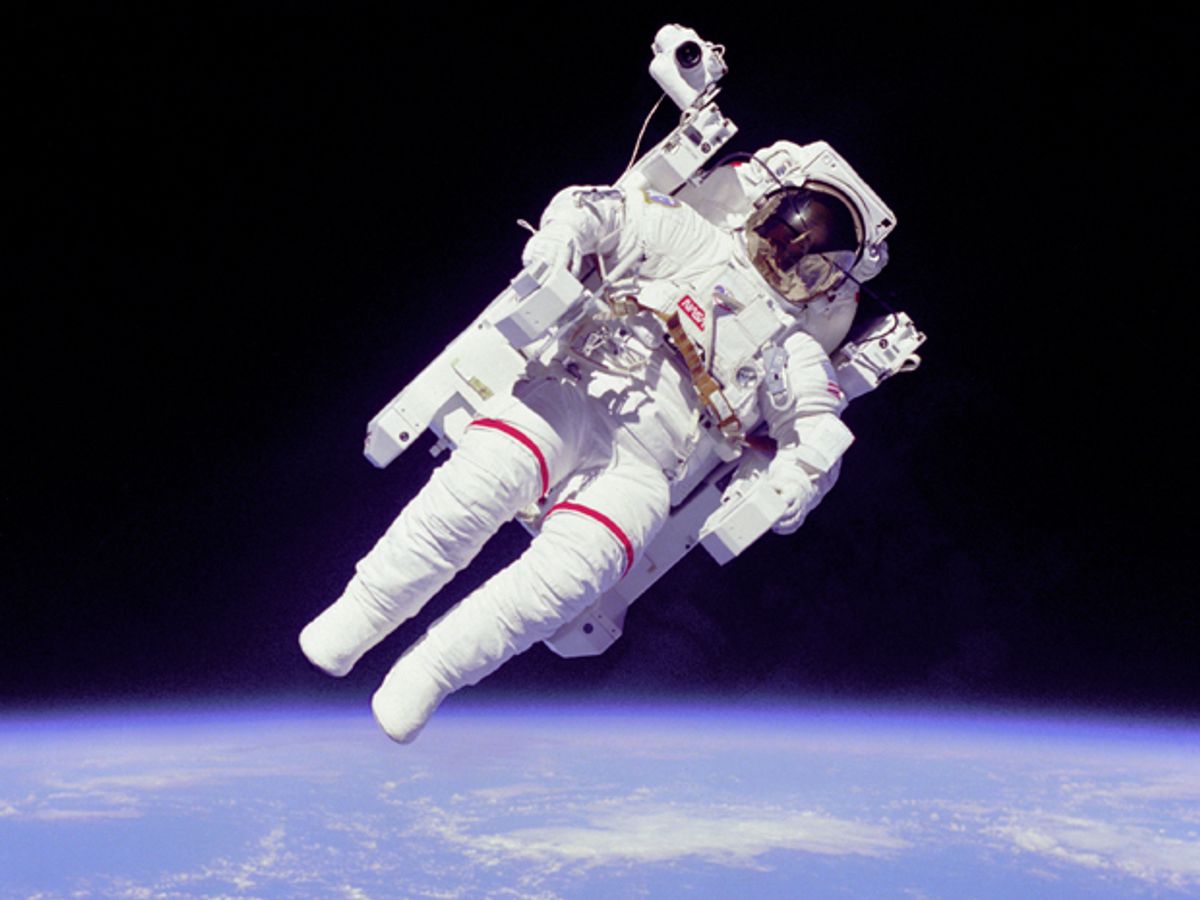Tiny medical robots capable of operating inside an astronaut's body could someday provide emergency surgery in space without the mess. A fist-sized robot is scheduled for its first zero-gravity test in the next several months—one small step toward enabling robotic medical attention for humans stuck on deep-space missions lasting for months.
The compact robot is the product of Virtual Incision and researchers from the University of Nebraska-Lincoln, according to New Scientist. It's designed to slip inside a person's body through a small belly button incision—not unlike the dreaded robotic "bug" from "The Matrix"—and inflate the patient's abdominal cavity with an inert gas to create room to work. Two arms tipped with multiple tools can perforate gastric ulcers, cauterize and suture wounds, or perform emergency appendectomies.
A human operator would control the robot using two Phantom Omni haptic devices that provide feedback, a monitor, and a foot pedal. Both the surgeon user interface and robot will get a chance to show off human-robotic coordination during a test run aboard a parabolic flight that's designed to mimic zero-gravity by diving to provide the illusion of weightlessness.
Emergency situations requiring the robot's assistance would hopefully be rare. But a presentation at the NASA Human Research Program Investigator's Workshop noted that such medical scenarios have been reported at remote locations during Arctic or Antarctic expeditions and during military submarine service. That suggests future astronauts and other space explorers could benefit from such technology while living at remote moon bases or Mars colonies far from Earth.
Having a small, precise robotic surgeon represents a boon at a time when both room and weight for space exploration missions remains constrained by the cost of rocket launches—a limitation that prevents NASA from readily hauling a da Vinci surgical robot into space. An alternative approach being considered by NASA involves teaching its generalist humanoid robot, named Robonaut, to carry out more basic medical diagnosis and treatment.
The minimal invasiveness of the robotic surgery also offers advantages in a zero-gravity environment where floating blood or other bodily fluids could mean a bad day for everyone. And on the off chance that an astronaut ever gets infected by a chest-bursting, acid-blooded alien, the 2012 film "Prometheus" taught moviegoers that it's always better to have a robotic surgeon on hand rather than wait for the alien to make its unpleasant, if spectacular, exit.
Photos: Astronaut: NASA; Robot: Virtual Incision
Jeremy Hsu has been working as a science and technology journalist in New York City since 2008. He has written on subjects as diverse as supercomputing and wearable electronics for IEEE Spectrum. When he’s not trying to wrap his head around the latest quantum computing news for Spectrum, he also contributes to a variety of publications such as Scientific American, Discover, Popular Science, and others. He is a graduate of New York University’s Science, Health & Environmental Reporting Program.




